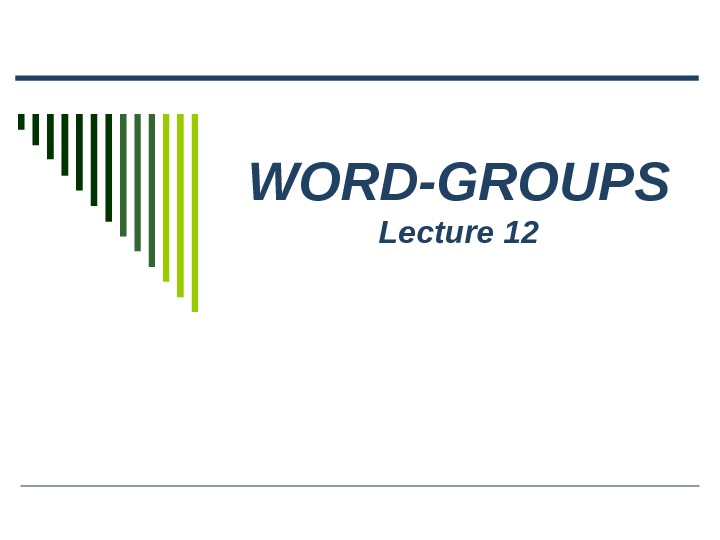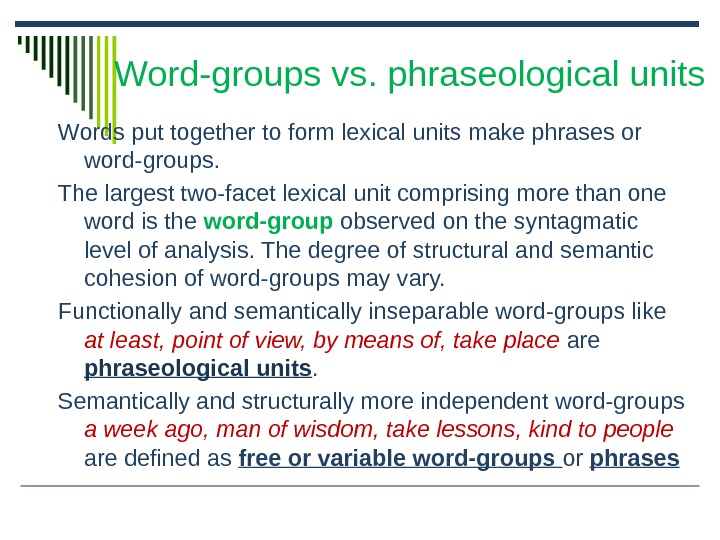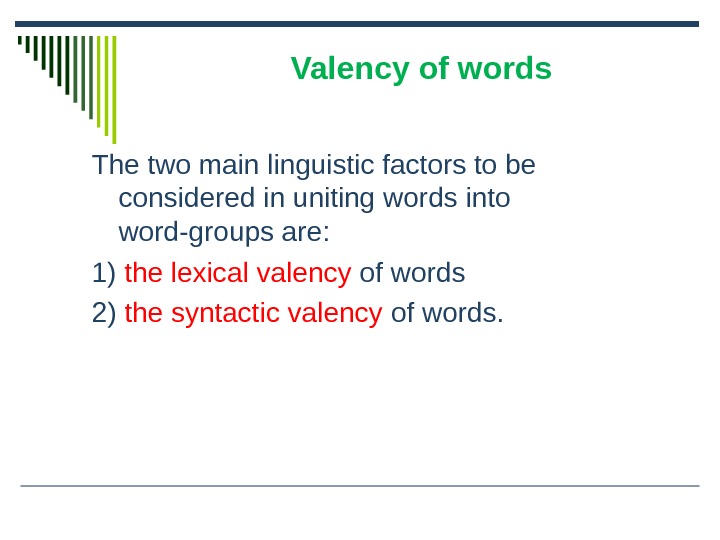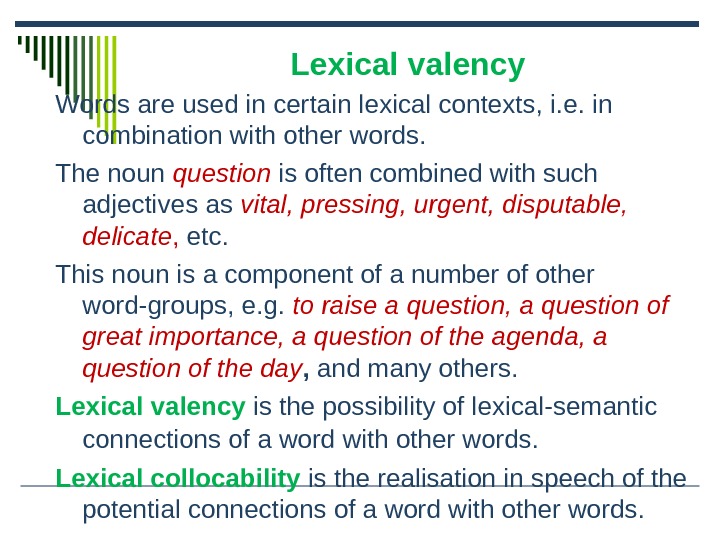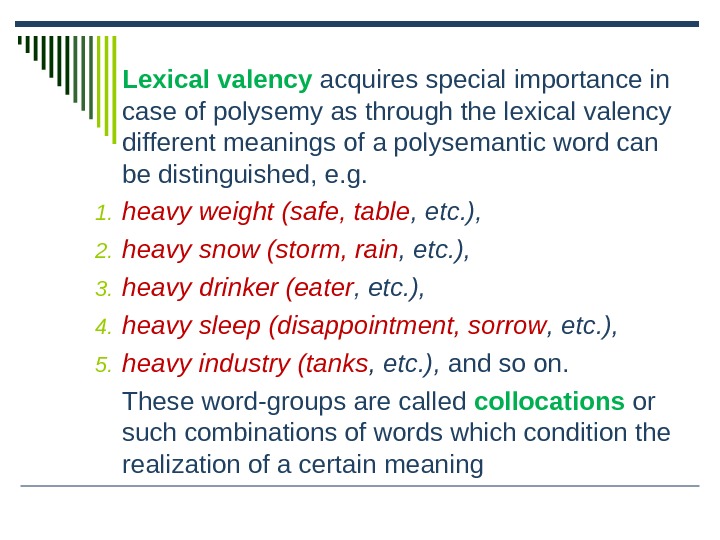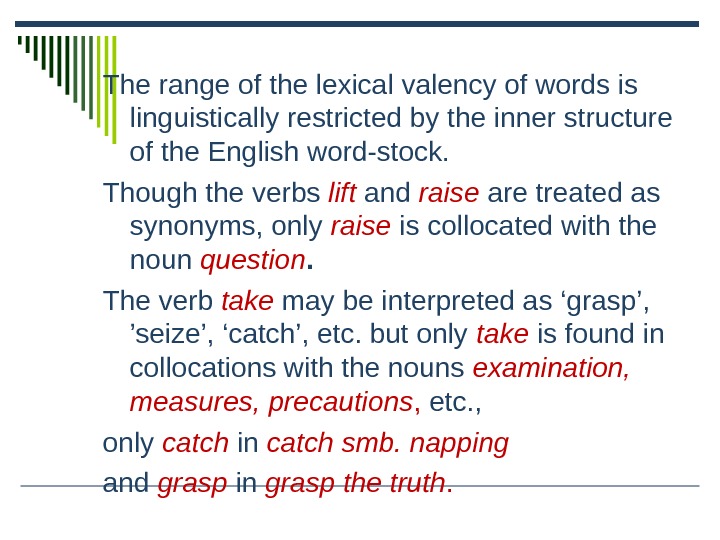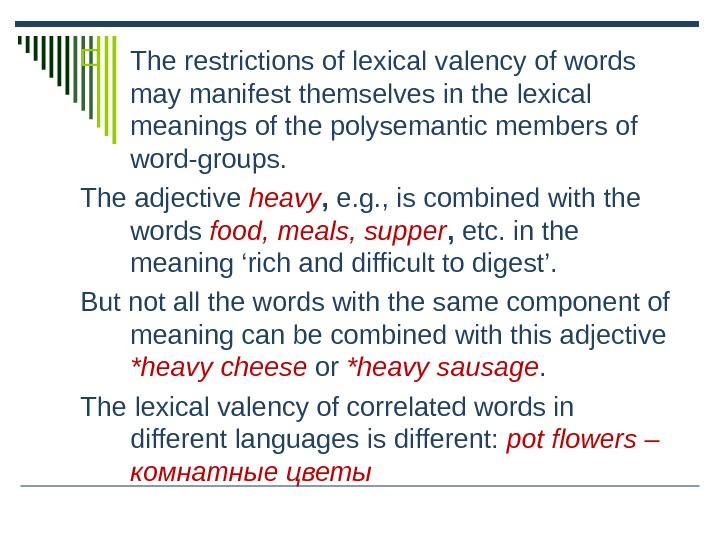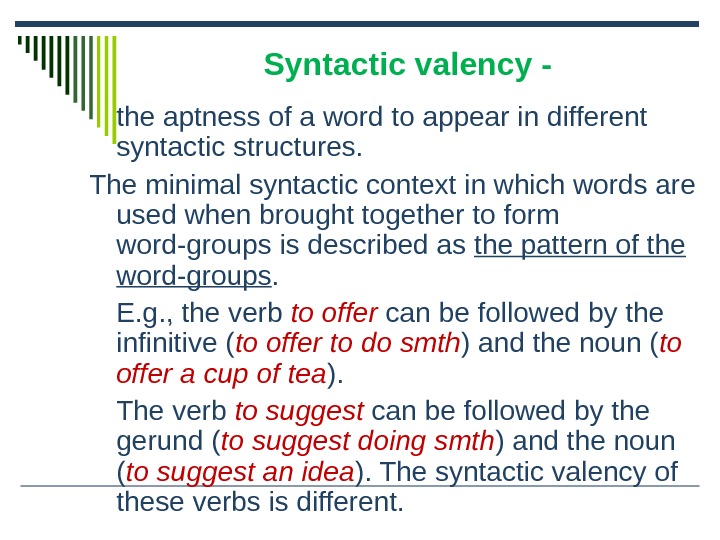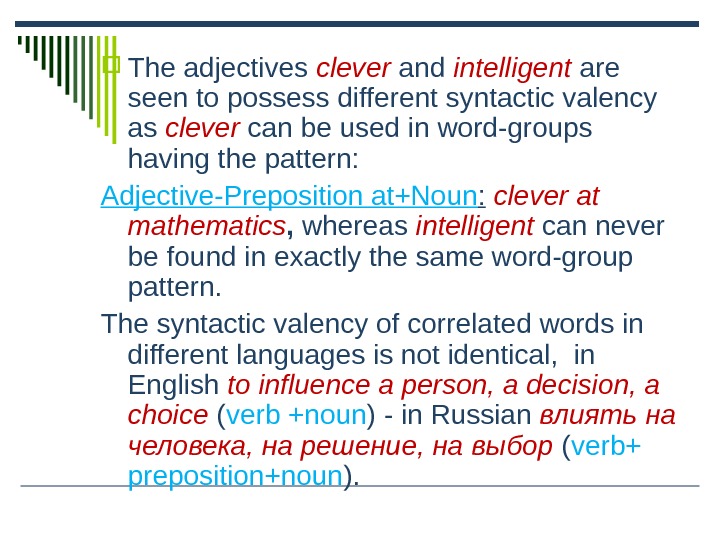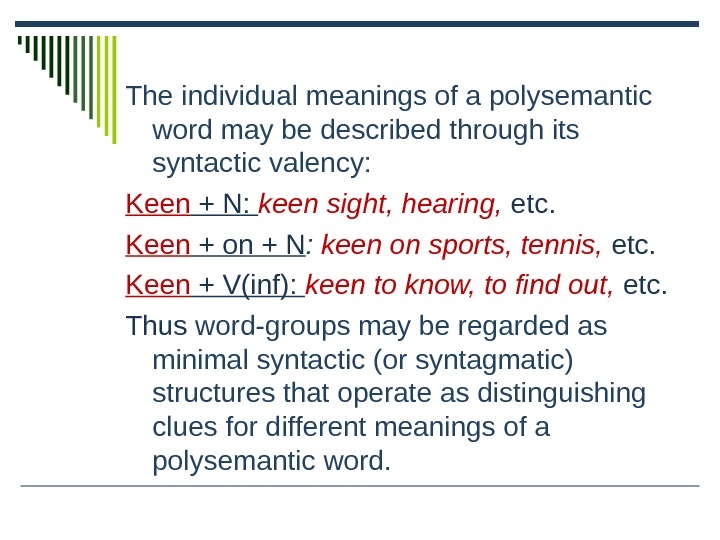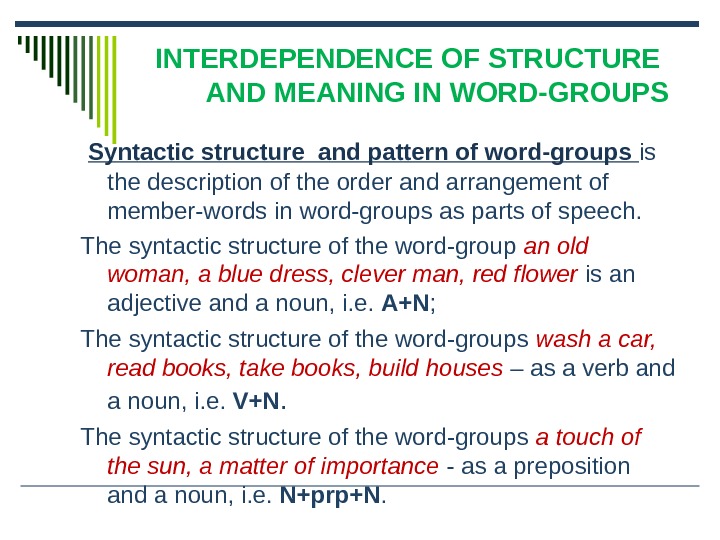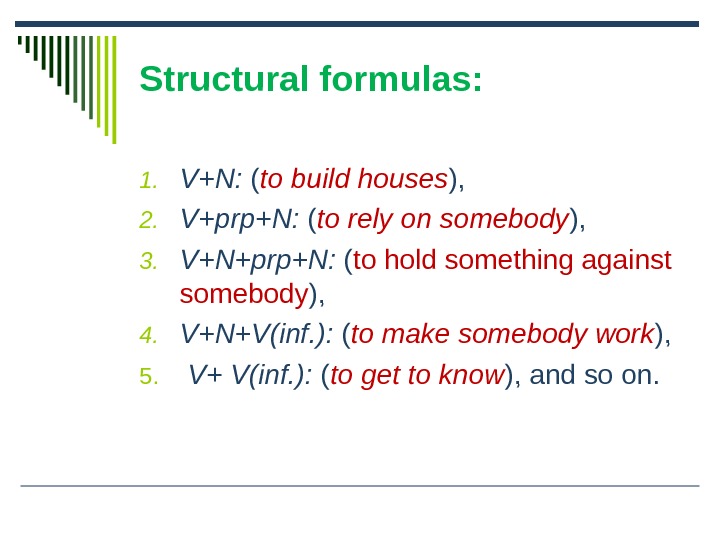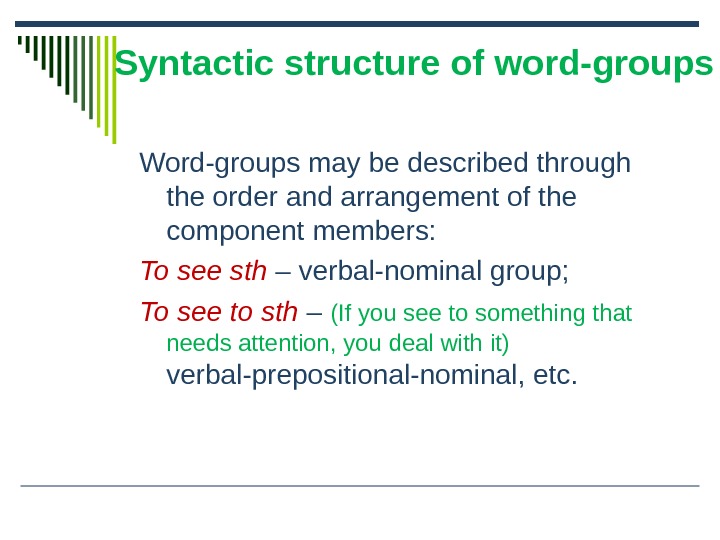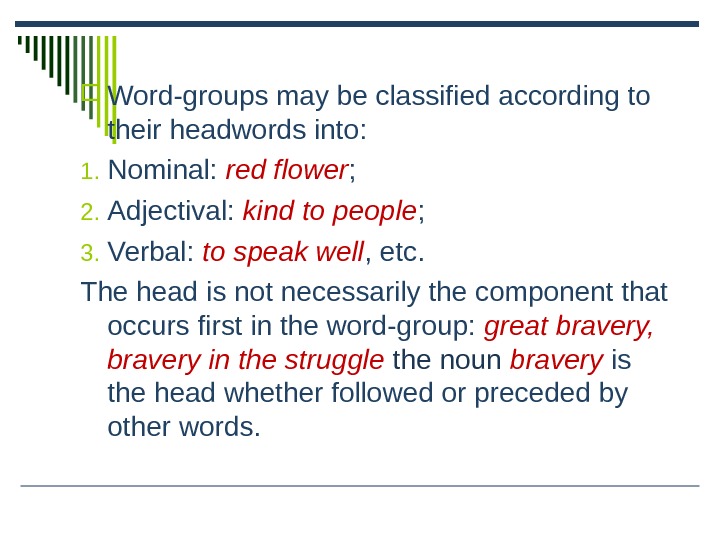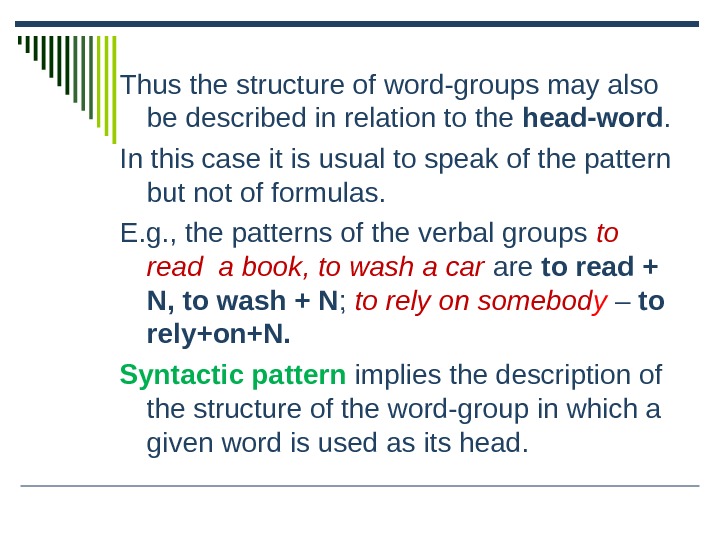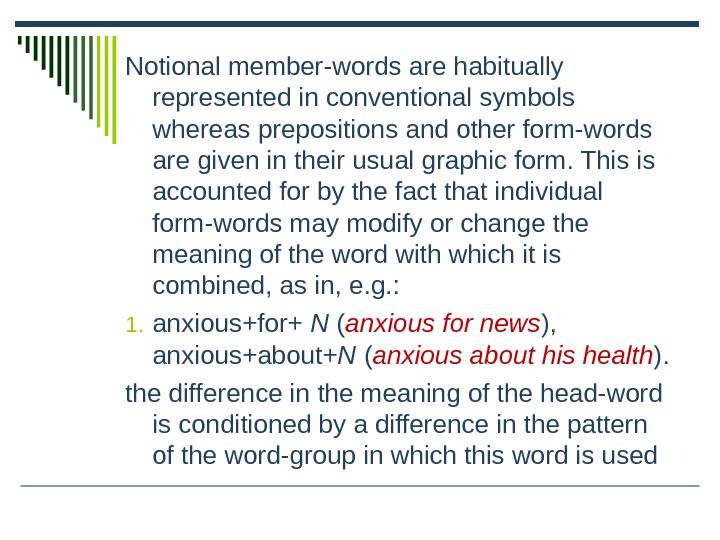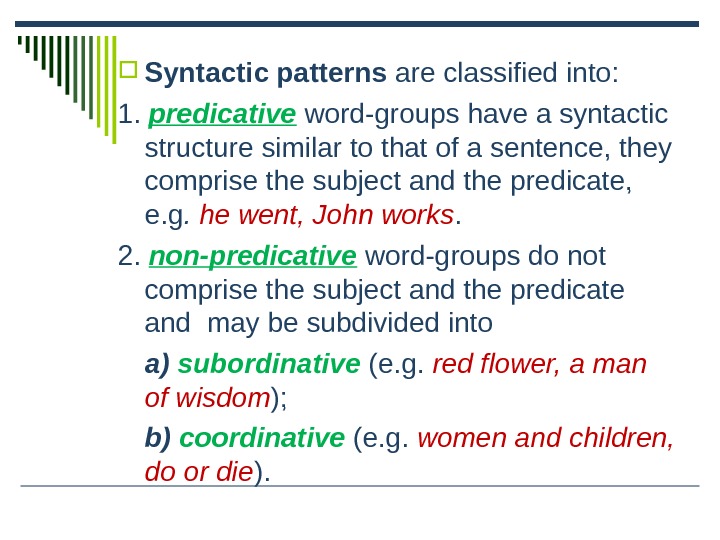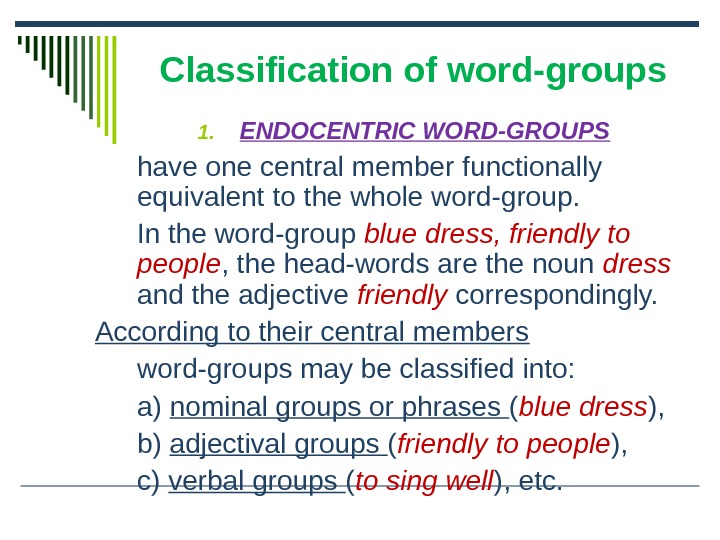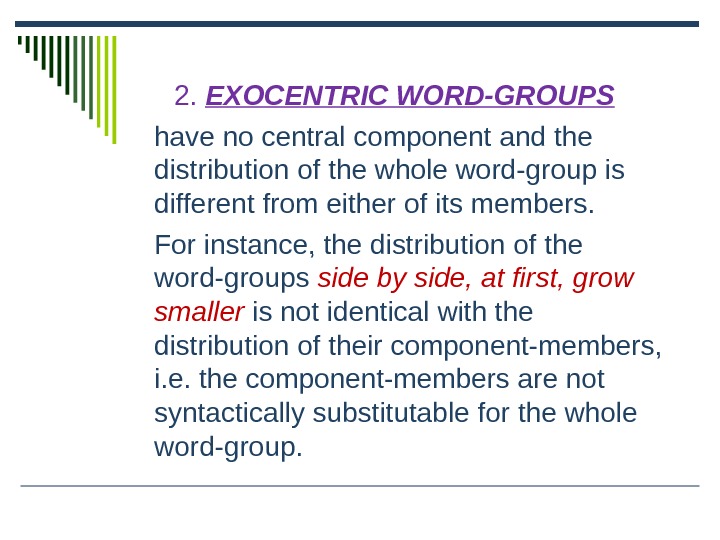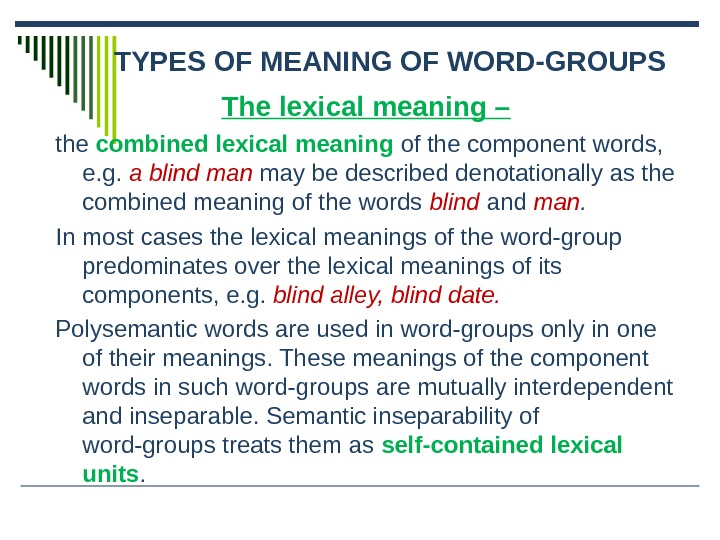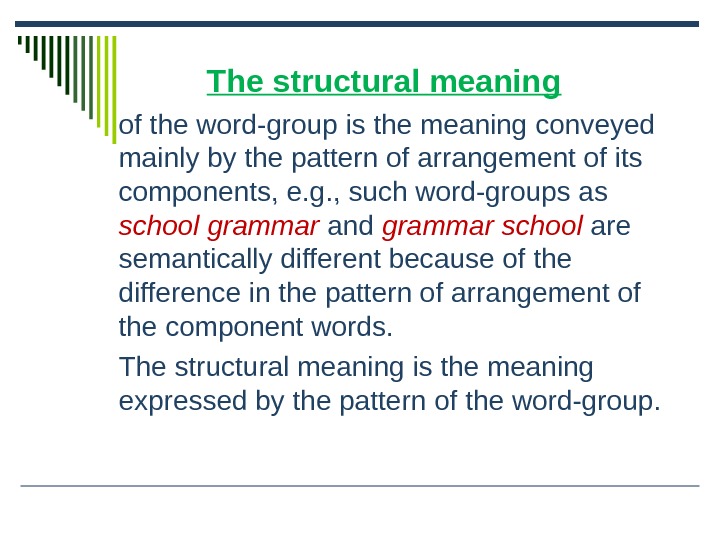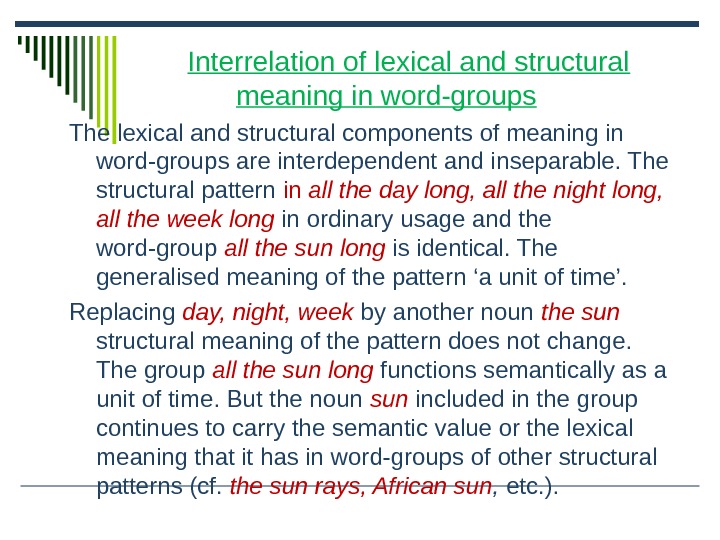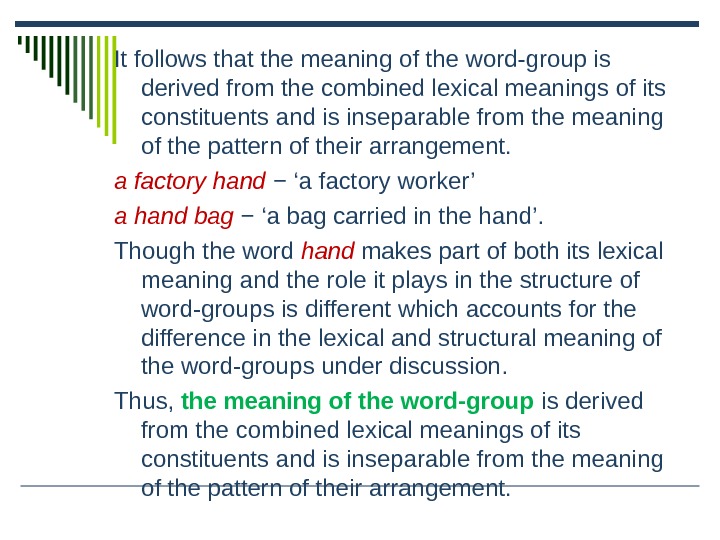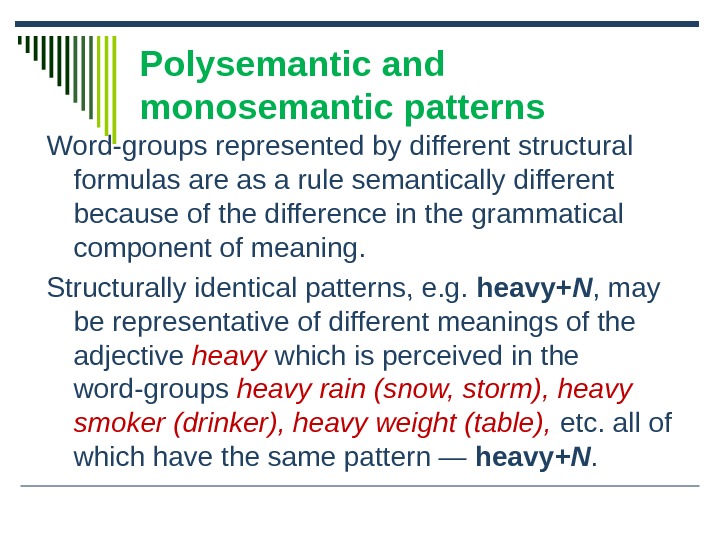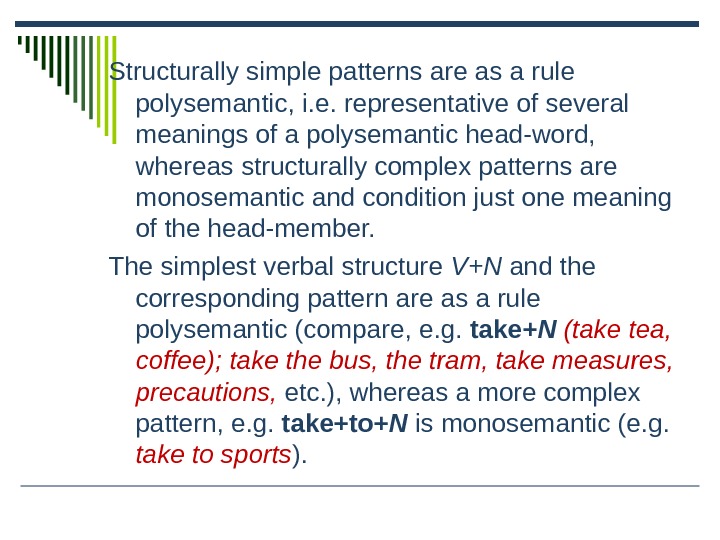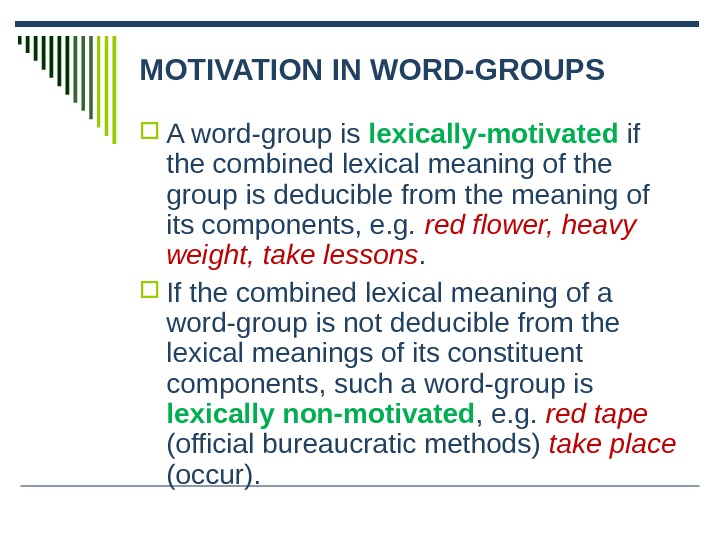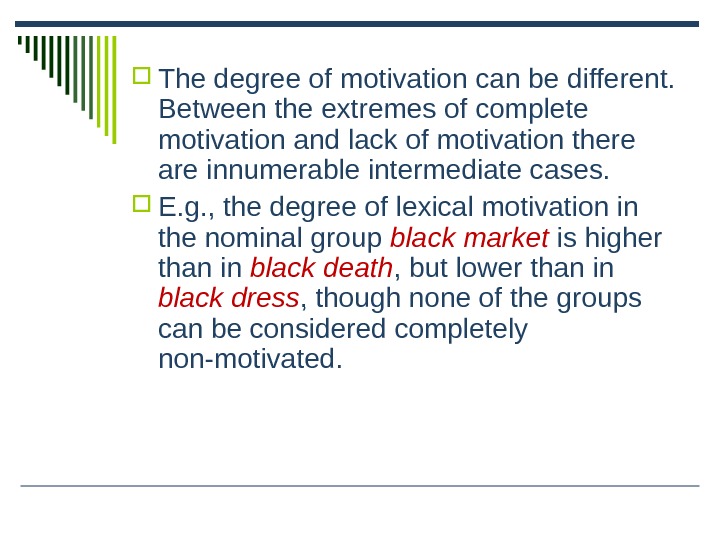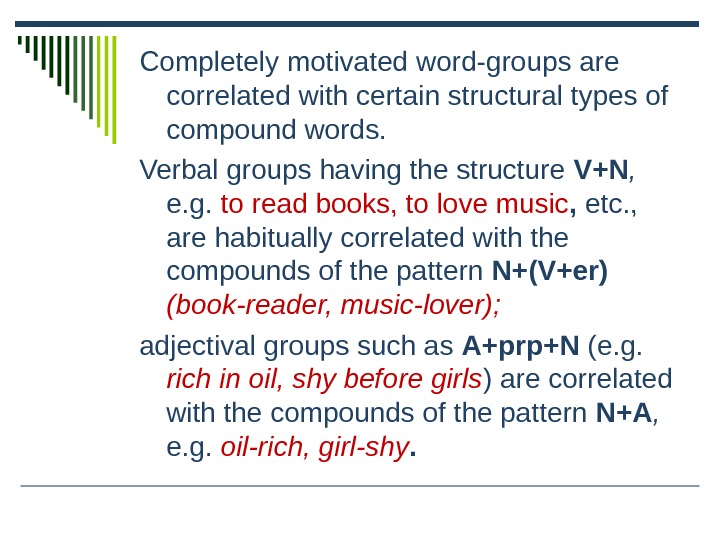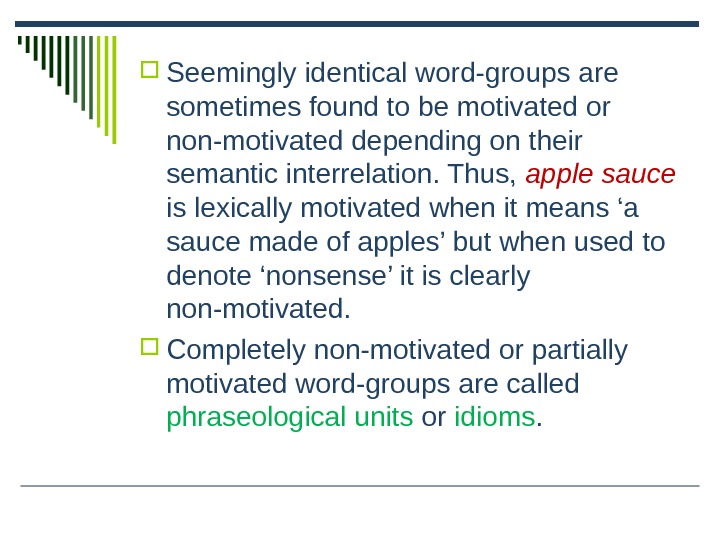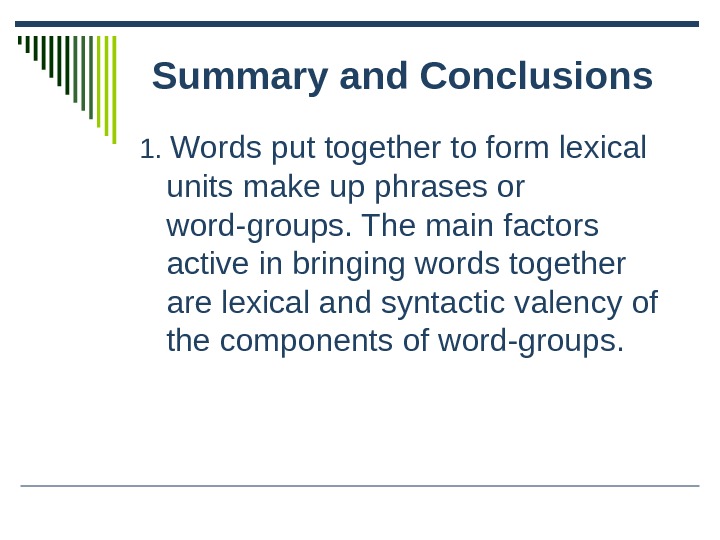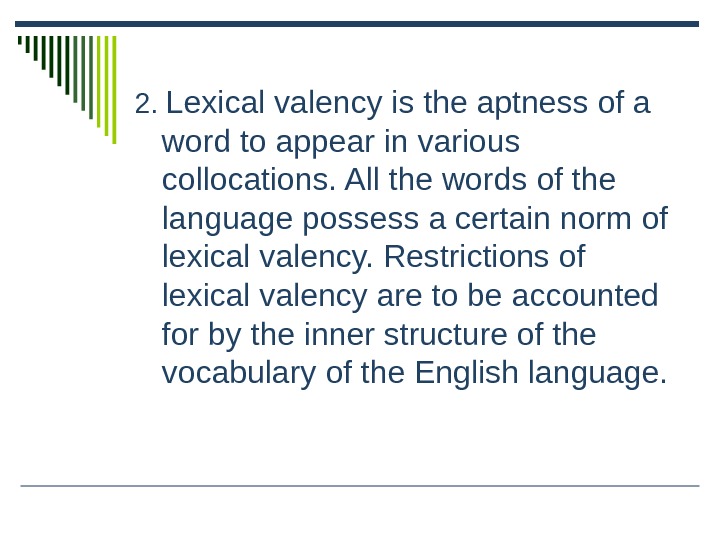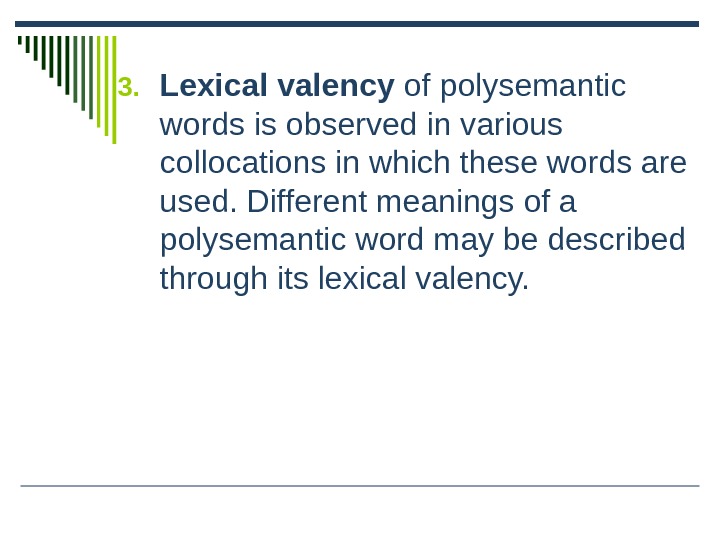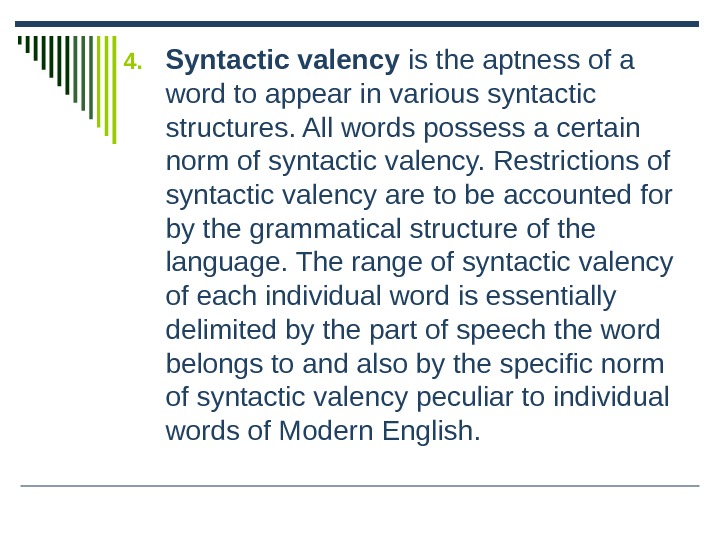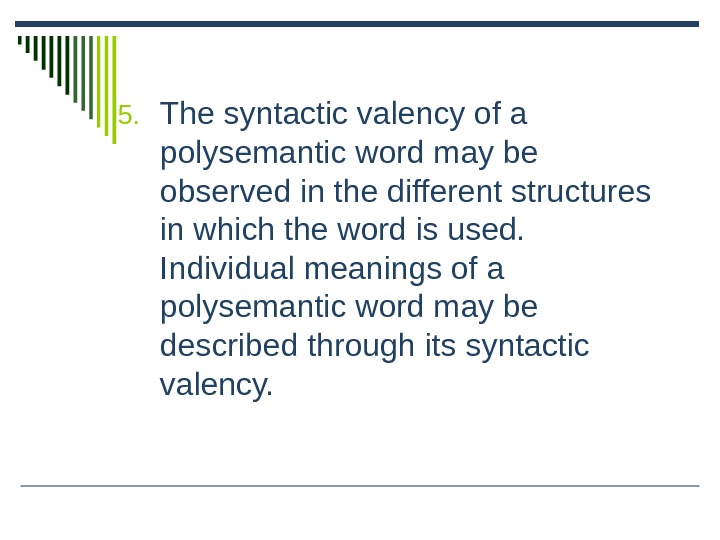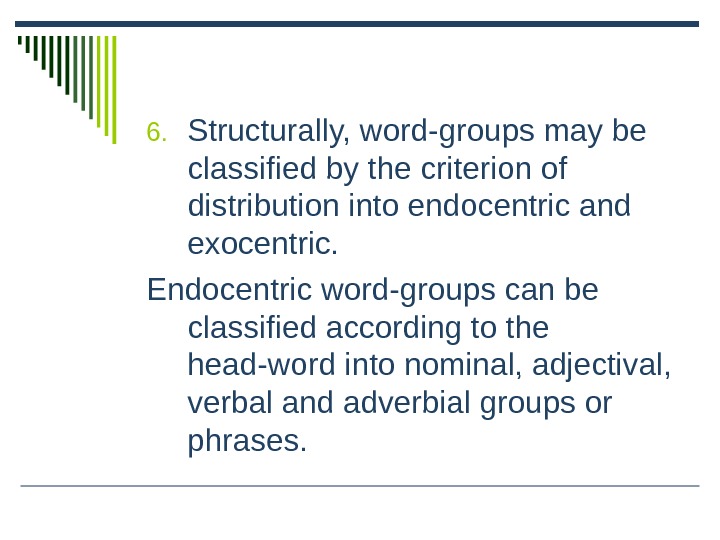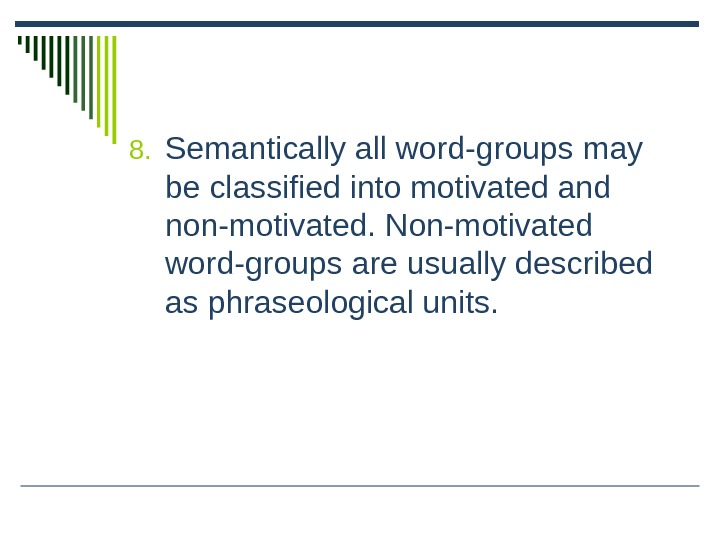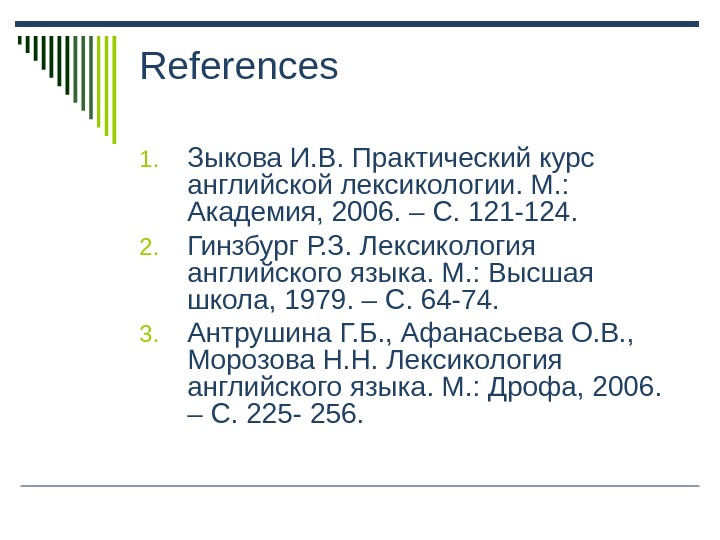Colloquial
vocabulary embraces common colloquial vocabulary and special
colloquial vocabulary: slang, jargonisms, professionalisms, dialectal
words, slangy
and vulgar words.
Common
colloquial vocabulary is
part of Standard English word-stock. It borders both on neutral
vocabulary and on special colloquial vocabulary. Colloquialisms are
familiar words and idioms used in informal speech and writing, but
unacceptable in polite conversation or business correspondence.
Compare standard speech sentence «Sir,
you speak clearly and to the point» and
its colloquial equivalent «Friend,
you talk plain and hit the nail right on the head». These
are informal words that are used in everyday conversational speech
both by educated and uneducated people of all age groups, e. g. pal
and chum
are colloquial equivalents of “friend”; bite
and snack
for”
meal”.
Literary
colloquial words are to be distinguished from familiar colloquial and
low colloquial. The borderline between the literary and familiar
colloquial is not always clearly marked. Yet the circle of speakers
using familiar colloquial is more limited. This vocabulary group
closely verges on slang and has something of its flavour, e.g. doc
= doctor, hi
=
how do you do. Low colloquial group is stocked with words of
illiterate English.
There
are some specific ways of forming colloquial words and grammatical
fusions. The most typical of them are contraction (demo
=
demonstration,
comp =
comprehensive
school, disco =
discotheque,
pub =
public
house, ad =
advertisement),
amalgamation
of two words in a single one (s’long
—
so
long, c’mon =
come
on, gimme =
give
me, wanna =
want
to, gonna =
going
to, don’t =
do
not, he’s =
he
has/is), affixation
(missy
=
miss,
girlie =
girl,
Scotty =
Scotchman),
compounding,
composing and blending (legman
—
reporter,
hanky-panky =
children’s
tricks, yellow-belly =
coward,
motel =
a
hotel for people who are travelling by car).
The
most productive way of building colloquial words in Russian and
Ukrainian is derivation. Lots of suffixes and prefixes convert
neutral words into conversational: мама
— мамочка,
мамуля,
мамуся,
мамка,
мамаша,
маман,
мамища;
книга
= книжка,
книжица,
книжонка,
книжища.
Many
of colloquial words are extremely emotional and image-bearing. For
example, the interjections oops,
oh, gee, wow, alas are
capable of rendering dozens of contextual subjective modal meanings,
such as gladness, rapture, disappointment, resentment, admiration,
etc. Not less expressive are Russian and Ukrainian colloquial words.
Compare: пустомеля,
скупердяй,
одурелый,
чумной,
орать,
проныра.
Expressive
colloquial words form long chains of synonyms: лицо
= физиономия,
портрет,
морда,
рожа,
харя,
рыло,
будка.
Jargonisms
may
be grouped into two large subdivisions: social jargonisms and
professional jargonisms.
Social
jargonisms are
non-standard words used by people of a certain social group to
conceal the meaning of words and to keep their intercourse secret. It
is a sort of secret code made up either of ordinary words invested
with a special meaning or distorted words, e.g., How
long did they cook you? (=investigate). There
are jargons of criminals, convicts, gamblers, vagabonds (бродяга),
souteneurs, prostitutes, drug addicts and the like. The use of jargon
conveys the suggestion that the speaker and the listener enjoy a
special «fraternity» which is closed for outsiders, because
outsiders do not understand the secret language. Here are some words
from American and Russian drug takers’ jargon: white
stuff =
cocaine
or morphine; candy =
cocaine;
snifter =
a
cocaine addict; boxed, spaced out, bombed, junked up or charged up =
being
affected by drugs; candy man =
drug
seller; cap =
a
capsule with a narcotic; jab-off =
an
injection of a narcotic; pin-shot —
an
injection of a drug made with a safety pin and an eye-dropper instead
of a hypodermic needle; mainliner =
a
drug addict who takes his narcotics by intravenous injection;
ширнуться
= ввести
наркотик
внутривенно;
раскумаритъся
= принять
наркотик
в
период
ломки,
ломка
= постнаркотическое
состояние
у
наркоманов,
которое
характеризуется
физическими
страданиями.
Social
contradictions of our life gave rise to such word combinations as
«отмазать
от
суда«,
«закосить
от
армии«.
Eventually,
some Jargonisms pass into standard speech. This is the case with the
Russian word «беспредел»
which
penetrated into Standard Russian from prison jargon due to its
expressiveness and topicality of meaning.
Eric
Partridge, an authority on the subject, identifies a number of
reasons for the creation and use of jargon. In his opinion, people
resort to jargon to be different, startling, or original; to display
one’s membership of a group; to be secretive or to exclude others; to
enrich the stock of language; to establish a friendly rapport with
others; to be irreverent or humorous.
Professionalisms
are
term-like words. They are used and understood by members of a certain
trade or profession. Their function is to rationalize professional
communication and make it economical. This is achieved due to a broad
semantic structure of professional terms, which makes them economical
substitutes for lengthy Standard English vocabulary equivalents.
Compare: scalpel
—
a
small sharp knife used by a doctor for doing an operation; round
pliers — a metal tool with round ends that looks like a strong pair
of scissors, used for holding small objects or for bending and
cutting wire; зачистить
населенный
пункт
(военный
арго);
отработать
подозреваемого
(милицейский
арго),
прозвонить
линию
(арго
телефонистов).
The
foreman in a garage does not need to write on a mechanic’s worksheet:
«Please
regulate the device which provides a constant supply of petrol to the
inlet manifold of the engine». He
writes: «Adjust
the carburetor». Soldiers
say: put
in a bag = to
be killed; picture
show =
battle; sewing
machine = machine
gun.
Dialecticisms
are
words used by people of a certain community living in a certain
territory. They are peculiar to some district and have no normalized
form. In US Southern dialect one might say: «Cousin,
у‘all
talk mighty fine» which
means «Sir,
you speak English well». In
ethnic-immigrant dialects the same sentence will sound as «Paisano,
you speek good the English» or
«Landsman,
your English is plenty all right already».
Many former dialectal words have entered the stratum of commonly used
colloquial words, e.g., lass
= girl
(Scottish), lad
= a young man; car,
trolley, tram –
began as dialect words. The Irish English gave, e.g., blarney
“flattery”, bog
“a
spongy, usually peaty ground of marsh”, whiskey.
The
contribution of the Scottish variant is very considerable. Some of
the most frequently used Scotticisms are: bairn
“child”, billy
“chum”, bonny
“handsome”, brogue
“a
stout shoe”, glamour
“charm”, laddie,
lassie, kilt, raid, slogan, tartan, wee
etc.
Writers
never write their books in dialect exclusively — the reader would not
understand such books. They only insert dialectal words, expressions,
grammar forms with a definite stylistic purpose: either to
characterize a personage through his speech or to create a local
colouring.
Slang
is
non-standard vocabulary understood and used by the whole nation.
According
to the Oxford English dictionary slang is “the language of a highly
colloquial style, considered as below the level of standard educated
speech and consisting either of new or of current words employed in
some special sense”.
People
use slang to be picturesque, arresting, striking above all, different
from others, to avoid the tedium of outmoded hackneyed “common”
words, to sound “modern” and “up-to-date”, e.g., mug
= face, blinkers
=
eyes, dogs
= feet, to
leg
= to walk. The
main feature of slang is its brightly expressed emotional, evaluative
and expressive character, e.g.,
to
go crazy or become silly
(neut.) – to
go bananas
(slang)
dollar
(neut.)
– fish
(slang)
to
have a chat with close friends
(neut.) – to
chew the fat
(slang)
to
know nothing about smth.
(neut.) – not
to know beans about
(slang)
Slang
can be classified into general and special. General slang consists of
words which are not specific for any social or professional group.
Special slang is divided into:
—
teenager slang, e.g., kiddo
= чувак,
buzzard
= кореш,
dumdum
= тормоз,
goof-off
= сачёк,
lame-brain
= сдвинутый;
-
universal
slang, e.g., mug
= экзамен,
that’s
a cockamamie
= фиговый
экзамен,
I’ll
make a boo-boo
= я
провалюсь,
real
mug
= зубрила,
I
couldn’t tumble to it
= я
не
врубился
в
эту
тему; -
military
slang, e.g., expendables
= солдатня,
conscript
=
дух,
to
finagle oneself out of army, to swing the lead
= закосить
армию,
clink
= губа; -
slang
of criminals, e.g., cops
= полицейские,
narks
= менты,
don,
mob
= главарь
банды,
to
burn rubber
= делать
ноги,
lagger
= бывший
зэк; -
air
force slang. -
football
slang -
sea
slang, etc.
Thus
slang-words are clearly motivated. For example, window-shopping
— “feasting one’s eyes on the goods displayed in the shops,
without buying anything”; belly-robber
– “the head of a military canteen”.
Slang
is sometimes described as the language of sub-cultures or the
language of the streets. It
is mainly used by the young and uneducated. Linguistically,
slang can be viewed as a sub-dialect. It is hardly used in writing —
except
for stylistic effect. People resort to slang because it is more
forceful, vivid and expressive than standard usages. Slangy words are
rough, often scornful (презрительный,
пренебрежительный;
насмешливый),
estimative and humorous. They are completely devoid of intelligence,
moral virtue, hospitality, sentimentality and other human values.
Slang prefers short words, especially monosyllables. Younger
generation is fond of slang, e.g., crazy, foolish = balmy,
batty, dippy, dotty, daffy, goofy, wacky, loony.
Language
as a system of signs reflects any changes in social and cultural life
of the nation. And slangy words as the most movable creative layer of
the lexis of colloquial style reflect, e.g., the appearing of slang
lexis in the culture of jazz, hippy, rock.
Vulgar
or obscene (непристойный,
неприличный;
вульгарный,
грубый)
words
may
be viewed as part of slang. They are always words with a strong
emotive colouring and sound insulting to the ear, e.g., a
smeller = a
nose, pay
dirt = money,
a
rotten party = morally
corrupt. Incorrect grammatical and phonetic forms of illiterate
speech cannot be regarded as vulgarisms.
The
most popular images of slang are food, money, sex and sexual
attraction, people’s appearances and characters. Because it is not
standard, formal or acceptable under all conditions, slang is usually
considered vulgar, impolite, or boorish (грубый,
невежливый,
невоспитанный,
неучтивый).
However, the vast majority of slangy words and expressions are
neither taboo, vulgar, derogatory, nor offensive in meaning,
sound, or image. Picturesque metaphor, metonymy, hyperbole and
irony make slangy words spicy (колкий,
язвительный).
Look how long, diverse and expressive the chain of slangy
synonyms denoting «money»
is:
ackers,
cly, cole, gelt, moo, moolah, mopus, oof, spondulicks, queer, boot,
chuck, hardstujf, lettuce, lolly, boodle, sea-coal, green goods, hay,
shoestring, ante, bread, ducats, dumps, swag, bean, blunt, crap,
dough, haddock, ochre, rubbish, salad, soap, splosh, sugar, chink,
gob, poke, iron, balsam, jack, loot, pile, wad, dust, tin, brass,
fat, rocks, chips, corn, red, sand, bundle, oil, shells.
For
the most part they sound somewhat vulgar, cynical and harsh: beans,
brass, dibs, oof
(money), attic,
brain-pan, nut, hat peg
(head).
Соседние файлы в предмете [НЕСОРТИРОВАННОЕ]
- #
- #
- #
- #
- #
- #
- #
- #
- #
- #
- #
From Wikipedia, the free encyclopedia
Studies that estimate and rank the most common words in English examine texts written in English. Perhaps the most comprehensive such analysis is one that was conducted against the Oxford English Corpus (OEC), a massive text corpus that is written in the English language.
In total, the texts in the Oxford English Corpus contain more than 2 billion words.[1] The OEC includes a wide variety of writing samples, such as literary works, novels, academic journals, newspapers, magazines, Hansard’s Parliamentary Debates, blogs, chat logs, and emails.[2]
Another English corpus that has been used to study word frequency is the Brown Corpus, which was compiled by researchers at Brown University in the 1960s. The researchers published their analysis of the Brown Corpus in 1967. Their findings were similar, but not identical, to the findings of the OEC analysis.
According to The Reading Teacher’s Book of Lists, the first 25 words in the OEC make up about one-third of all printed material in English, and the first 100 words make up about half of all written English.[3] According to a study cited by Robert McCrum in The Story of English, all of the first hundred of the most common words in English are of Old English origin,[4] except for «people», ultimately from Latin «populus», and «because», in part from Latin «causa».
Some lists of common words distinguish between word forms, while others rank all forms of a word as a single lexeme (the form of the word as it would appear in a dictionary). For example, the lexeme be (as in to be) comprises all its conjugations (is, was, am, are, were, etc.), and contractions of those conjugations.[5] These top 100 lemmas listed below account for 50% of all the words in the Oxford English Corpus.[1]
100 most common words
A list of 100 words that occur most frequently in written English is given below, based on an analysis of the Oxford English Corpus (a collection of texts in the English language, comprising over 2 billion words).[1] A part of speech is provided for most of the words, but part-of-speech categories vary between analyses, and not all possibilities are listed. For example, «I» may be a pronoun or a Roman numeral; «to» may be a preposition or an infinitive marker; «time» may be a noun or a verb. Also, a single spelling can represent more than one root word. For example, «singer» may be a form of either «sing» or «singe». Different corpora may treat such difference differently.
The number of distinct senses that are listed in Wiktionary is shown in the polysemy column. For example, «out» can refer to an escape, a removal from play in baseball, or any of 36 other concepts. On average, each word in the list has 15.38 senses. The sense count does not include the use of terms in phrasal verbs such as «put out» (as in «inconvenienced») and other multiword expressions such as the interjection «get out!», where the word «out» does not have an individual meaning.[6] As an example, «out» occurs in at least 560 phrasal verbs[7] and appears in nearly 1700 multiword expressions.[8]
The table also includes frequencies from other corpora. Note that as well as usage differences, lemmatisation may differ from corpus to corpus – for example splitting the prepositional use of «to» from the use as a particle. Also the Corpus of Contemporary American English (COCA) list includes dispersion as well as frequency to calculate rank.
| Word | Parts of speech | OEC rank | COCA rank[9] | Dolch level | Polysemy |
|---|---|---|---|---|---|
| the | Article | 1 | 1 | Pre-primer | 12 |
| be | Verb | 2 | 2 | Primer | 21 |
| to | Preposition | 3 | 7, 9 | Pre-primer | 17 |
| of | Preposition | 4 | 4 | Grade 1 | 12 |
| and | Conjunction | 5 | 3 | Pre-primer | 16 |
| a | Article | 6 | 5 | Pre-primer | 20 |
| in | Preposition | 7 | 6, 128, 3038 | Pre-primer | 23 |
| that | Conjunction et al. | 8 | 12, 27, 903 | Primer | 17 |
| have | Verb | 9 | 8 | Primer | 25 |
| I | Pronoun | 10 | 11 | Pre-primer | 7 |
| it | Pronoun | 11 | 10 | Pre-primer | 18 |
| for | Preposition | 12 | 13, 2339 | Pre-primer | 19 |
| not | Adverb et al. | 13 | 28, 2929 | Pre-primer | 5 |
| on | Preposition | 14 | 17, 155 | Primer | 43 |
| with | Preposition | 15 | 16 | Primer | 11 |
| he | Pronoun | 16 | 15 | Primer | 7 |
| as | Adverb, conjunction, et al. | 17 | 33, 49, 129 | Grade 1 | 17 |
| you | Pronoun | 18 | 14 | Pre-primer | 9 |
| do | Verb, noun | 19 | 18 | Primer | 38 |
| at | Preposition | 20 | 22 | Primer | 14 |
| this | Determiner, adverb, noun | 21 | 20, 4665 | Primer | 9 |
| but | Preposition, adverb, conjunction | 22 | 23, 1715 | Primer | 17 |
| his | Possessive pronoun | 23 | 25, 1887 | Grade 1 | 6 |
| by | Preposition | 24 | 30, 1190 | Grade 1 | 19 |
| from | Preposition | 25 | 26 | Grade 1 | 4 |
| they | Pronoun | 26 | 21 | Primer | 6 |
| we | Pronoun | 27 | 24 | Pre-primer | 6 |
| say | Verb et al. | 28 | 19 | Primer | 17 |
| her | Possessive pronoun | 29, 106 | 42 | Grade 1 | 3 |
| she | Pronoun | 30 | 31 | Primer | 7 |
| or | Conjunction | 31 | 32 | Grade 2 | 11 |
| an | Article | 32 | (a) | Grade 1 | 6 |
| will | Verb, noun | 33 | 48, 1506 | Primer | 16 |
| my | Possessive pronoun | 34 | 44 | Pre-primer | 5 |
| one | Noun, adjective, et al. | 35 | 51, 104, 839 | Pre-primer | 24 |
| all | Adjective | 36 | 43, 222 | Primer | 15 |
| would | Verb | 37 | 41 | Grade 2 | 13 |
| there | Adverb, pronoun, et al. | 38 | 53, 116 | Primer | 14 |
| their | Possessive pronoun | 39 | 36 | Grade 2 | 2 |
| what | Pronoun, adverb, et al. | 40 | 34 | Primer | 19 |
| so | Conjunction, adverb, et al. | 41 | 55, 196 | Primer | 18 |
| up | Adverb, preposition, et al. | 42 | 50, 456 | Pre-primer | 50 |
| out | Preposition | 43 | 64, 149 | Primer | 38 |
| if | Conjunction | 44 | 40 | Grade 3 | 9 |
| about | Preposition, adverb, et al. | 45 | 46, 179 | Grade 3 | 18 |
| who | Pronoun, noun | 46 | 38 | Primer | 5 |
| get | Verb | 47 | 39 | Primer | 37 |
| which | Pronoun | 48 | 58 | Grade 2 | 7 |
| go | Verb, noun | 49 | 35 | Pre-primer | 54 |
| me | Pronoun | 50 | 61 | Pre-primer | 10 |
| when | Adverb | 51 | 57, 136 | Grade 1 | 11 |
| make | Verb, noun | 52 | 45 | Grade 2 [as «made»] | 48 |
| can | Verb, noun | 53 | 37, 2973 | Pre-primer | 18 |
| like | Preposition, verb | 54 | 74, 208, 1123, 1684, 2702 | Primer | 26 |
| time | Noun | 55 | 52 | Dolch list of 95 nouns | 14 |
| no | Determiner, adverb | 56 | 93, 699, 916, 1111, 4555 | Primer | 10 |
| just | Adjective | 57 | 66, 1823 | 14 | |
| him | Pronoun | 58 | 68 | 5 | |
| know | Verb, noun | 59 | 47 | 13 | |
| take | Verb, noun | 60 | 63 | 66 | |
| people | Noun | 61 | 62 | 9 | |
| into | Preposition | 62 | 65 | 10 | |
| year | Noun | 63 | 54 | 7 | |
| your | Possessive pronoun | 64 | 69 | 4 | |
| good | Adjective | 65 | 110, 2280 | 32 | |
| some | Determiner, pronoun | 66 | 60 | 10 | |
| could | Verb | 67 | 71 | 6 | |
| them | Pronoun | 68 | 59 | 3 | |
| see | Verb | 69 | 67 | 25 | |
| other | Adjective, pronoun | 70 | 75, 715, 2355 | 12 | |
| than | Conjunction, preposition | 71 | 73, 712 | 4 | |
| then | Adverb | 72 | 77 | 10 | |
| now | Preposition | 73 | 72, 1906 | 13 | |
| look | Verb | 74 | 85, 604 | 17 | |
| only | Adverb | 75 | 101, 329 | 11 | |
| come | Verb | 76 | 70 | 20 | |
| its | Possessive pronoun | 77 | 78 | 2 | |
| over | Preposition | 78 | 124, 182 | 19 | |
| think | Verb | 79 | 56 | 10 | |
| also | Adverb | 80 | 87 | 2 | |
| back | Noun, adverb | 81 | 108, 323, 1877 | 36 | |
| after | Preposition | 82 | 120, 260 | 14 | |
| use | Verb, noun | 83 | 92, 429 | 17 | |
| two | Noun | 84 | 80 | 6 | |
| how | Adverb | 85 | 76 | 11 | |
| our | Possessive pronoun | 86 | 79 | 3 | |
| work | Verb, noun | 87 | 117, 199 | 28 | |
| first | Adjective | 88 | 86, 2064 | 10 | |
| well | Adverb | 89 | 100, 644 | 30 | |
| way | Noun, adverb | 90 | 84, 4090 | 16 | |
| even | Adjective | 91 | 107, 484 | 23 | |
| new | Adjective et al. | 92 | 88 | 18 | |
| want | Verb | 93 | 83 | 10 | |
| because | Conjunction | 94 | 89, 509 | 7 | |
| any | Pronoun | 95 | 109, 4720 | 4 | |
| these | Pronoun | 96 | 82 | 2 | |
| give | Verb | 97 | 98 | 19 | |
| day | Noun | 98 | 90 | 9 | |
| most | Adverb | 99 | 144, 187 | 12 | |
| us | Pronoun | 100 | 113 | 6 |
Parts of speech
The following is a very similar list, subdivided by part of speech.[1] The list labeled «Others» includes pronouns, possessives, articles, modal verbs, adverbs, and conjunctions.
| Rank | Nouns | Verbs | Adjectives | Prepositions | Others |
|---|---|---|---|---|---|
| 1 | time | be | good | to | the |
| 2 | person | have | new | of | and |
| 3 | year | do | first | in | a |
| 4 | way | say | last | for | that |
| 5 | day | get | long | on | I |
| 6 | thing | make | great | with | it |
| 7 | man | go | little | at | not |
| 8 | world | know | own | by | he |
| 9 | life | take | other | from | as |
| 10 | hand | see | old | up | you |
| 11 | part | come | right | about | this |
| 12 | child | think | big | into | but |
| 13 | eye | look | high | over | his |
| 14 | woman | want | different | after | they |
| 15 | place | give | small | her | |
| 16 | work | use | large | she | |
| 17 | week | find | next | or | |
| 18 | case | tell | early | an | |
| 19 | point | ask | young | will | |
| 20 | government | work | important | my | |
| 21 | company | seem | few | one | |
| 22 | number | feel | public | all | |
| 23 | group | try | bad | would | |
| 24 | problem | leave | same | there | |
| 25 | fact | call | able | their |
See also
- Basic English
- Frequency analysis, the study of the frequency of letters or groups of letters
- Letter frequencies
- Oxford English Corpus
- Swadesh list, a compilation of basic concepts for the purpose of historical-comparative linguistics
- Zipf’s law, a theory stating that the frequency of any word is inversely proportional to its rank in a frequency table
Word lists
- Dolch Word List, a list of frequently used English words
- General Service List
- Word lists by frequency
References
- ^ a b c d «The Oxford English Corpus: Facts about the language». OxfordDictionaries.com. Oxford University Press. What is the commonest word?. Archived from the original on December 26, 2011. Retrieved June 22, 2011.
- ^ «The Oxford English Corpus». AskOxford.com. Archived from the original on May 4, 2006. Retrieved June 22, 2006.
- ^ The First 100 Most Commonly Used English Words Archived 2013-06-16 at the Wayback Machine.
- ^ Bill Bryson, The Mother Tongue: English and How It Got That Way, Harper Perennial, 2001, page 58
- ^ Benjamin Zimmer. June 22, 2006. Time after time after time…. Language Log. Retrieved June 22, 2006.
- ^ Benjamin, Martin (2019). «Polysemy in top 100 Oxford English Corpus words within Wiktionary». Teach You Backwards. Retrieved December 28, 2019.
- ^ Garcia-Vega, M (2010). «Teasing out the meaning of «out»«. 29th International Conference on Lexis and Grammar.
- ^ «out — English-French Dictionary». www.wordreference.com. Retrieved November 22, 2022.
- ^ «Word frequency: based on 450 million word COCA corpus». www.wordfrequency.info. Retrieved April 11, 2018.
External links
- Размер: 211 Кб
- Количество слайдов: 39
